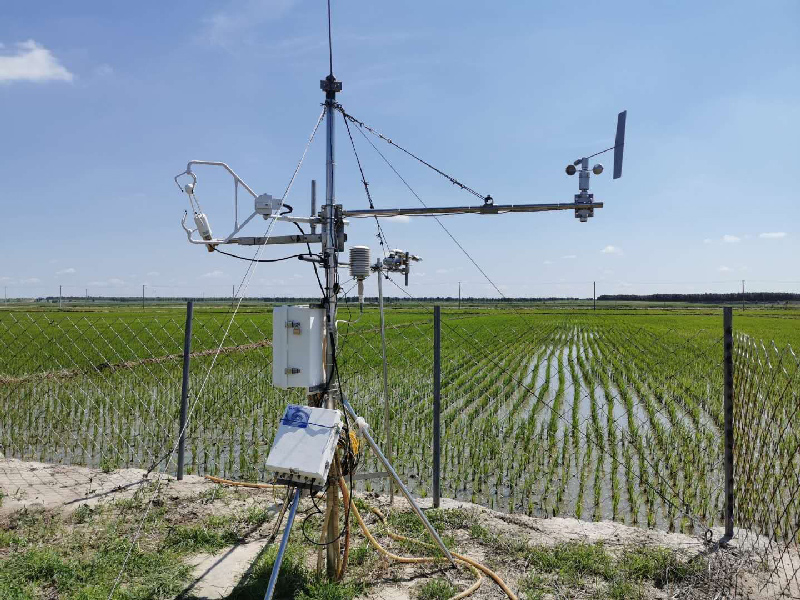The underside of a leaf is equipped with many thousands of stomata—microscopic pores that act as pathways for carbon dioxide and water vapor. As climate change causes temperatures to rise, stomata are narrowing, reducing plants’ ability to take in carbon, according to a new study published in Science.
“The global average plant water use efficiency has stabilized.”
Gram for gram, a plant loses far more water every day than any terrestrial animal—99% of the water taken in by roots is released into the air as water vapor. While the stomata are open, water vapor travels out, and carbon travels in. The ratio of carbon assimilation per unit of water loss is called water use efficiency, and the new research says that globally, it has stalled.
Previously, many scientists thought that in the face of rising emissions water use efficiency would increase, according to the study’s lead authors, because higher atmospheric carbon concentration would mean more carbon would enter stomata.
“But what we show is different,” said study coauthor Jingfeng Xiao, an Earth systems scientist at the University of New Hampshire. “The global average plant water use efficiency has stabilized.”
Vapor Pressure Changed the Story
That’s because carbon emissions don’t happen in a vacuum; they happen in a complex system. “Not only is carbon dioxide increasing, temperature is increasing, air is becoming drier, and this is where vapor pressure deficit comes in,” said Vivek Arora, a climate scientist at Environment and Climate Change Canada who was not involved in the study.
Vapor pressure deficit is the difference between the current water vapor concentration in the air and the maximum amount of water vapor it could hold. Warmer air has the potential to hold more water vapor, but that doesn’t necessarily mean it will.
“High vapor pressure deficit means the atmosphere is dry,” said study coauthor Fei Li, an Earth scientist at the Chinese Academy of Agricultural Sciences. “That will lead to a loss of water, [and so] the stomata will be closed, not totally closed, but a little bit to reduce water loss.”
But when plants close or mostly close their stomata, they also reduce their ability to take up carbon.

The authors studied global water use efficiency by using 24 machine learning models to extrapolate data from ground-based FLUXNET sites around the world. FLUXNET instruments measure carbon dioxide and water moving between ecosystems and the atmosphere, Xiao said. The trend was consistent among all models, he said: Water use efficiency increased from 1982 to 2000 and then leveled off, despite rising carbon emissions in the atmosphere.
Though no model is perfect, Arora said he is satisfied with the researchers’ approach in the study. “You have to do your due diligence, and the fact that the 24 machine learning algorithms used by the authors project similar changes in water use efficiency provides confidence in these results.”
Carbon Emissions with Nowhere to Go
Though the land and the ocean currently absorb about half of carbon emissions, Arora explained, rising vapor pressure deficits would force plants to keep their stomata closed to conserve water, potentially limiting how much carbon plants take in. The new results indicated that the trillions of plants making up the terrestrial biome began doing that more than 20 years ago, girding against water loss wrought by climate change.
“What we are trying to project is, if we keep emitting at this rate, what the future of carbon dioxide concentration is going to be.”
If land slows how much carbon it takes up, climate change will accelerate, Arora said, because more carbon dioxide will stay in the atmosphere. “What we are trying to project is, if we keep emitting at this rate, what the future of carbon dioxide concentration is going to be.”
The results also have implications for understanding observed trends in Earth’s changing landscapes. “There have been quite a few papers over the past few years indicating that runoff has been increasing at regional and continental scales,” Xiao said. Some scientists have speculated that increased global water use efficiency led to more water in the water cycle, which ultimately caused the increased runoff. But, according to the new findings, water use efficiency has stalled, so there must be another reason for the trend.
—Emily Shepherd (@emilyshep1011), Science Writer

